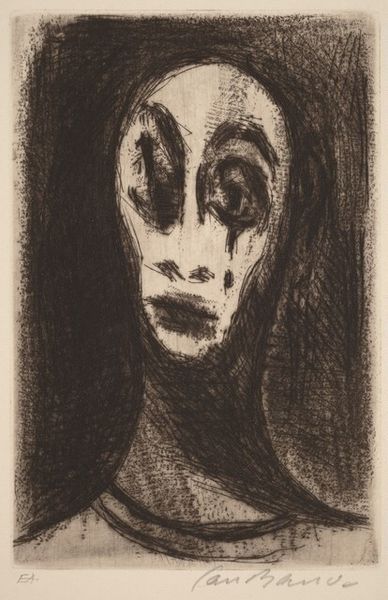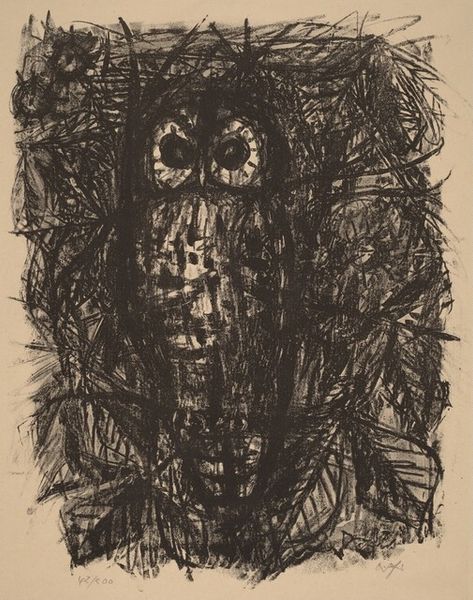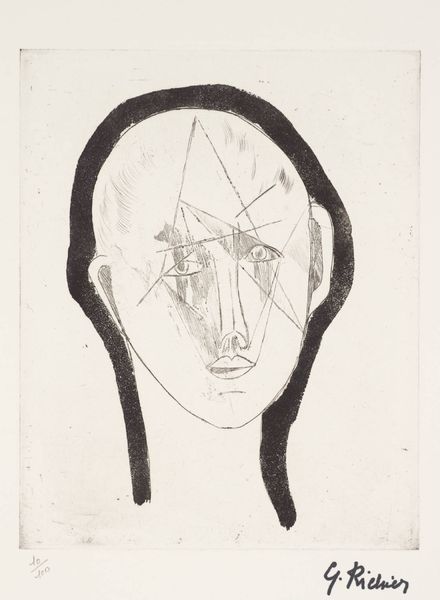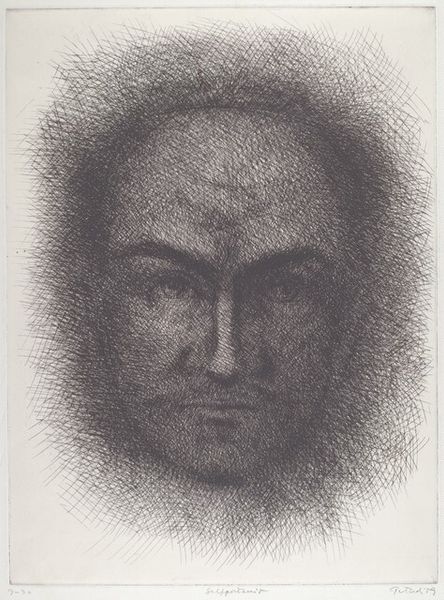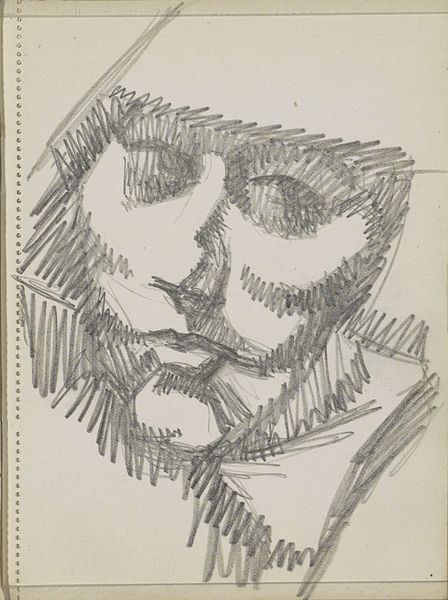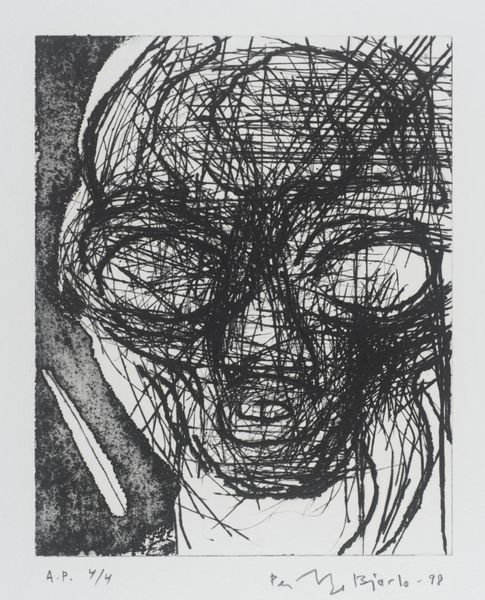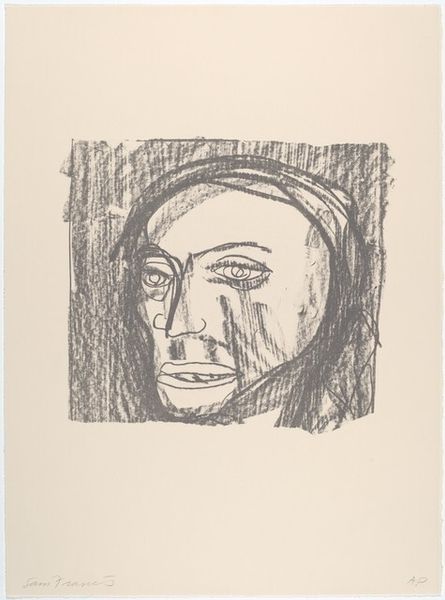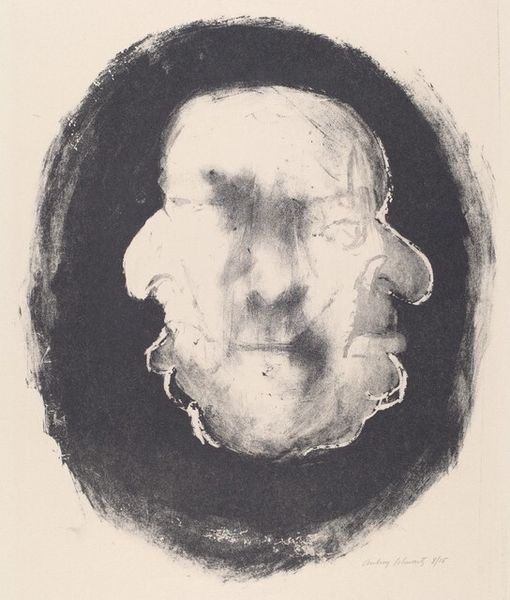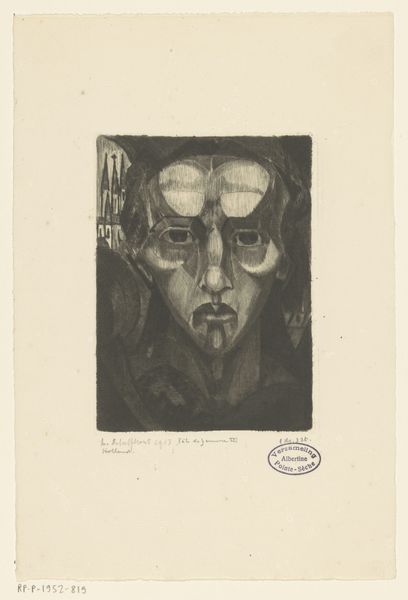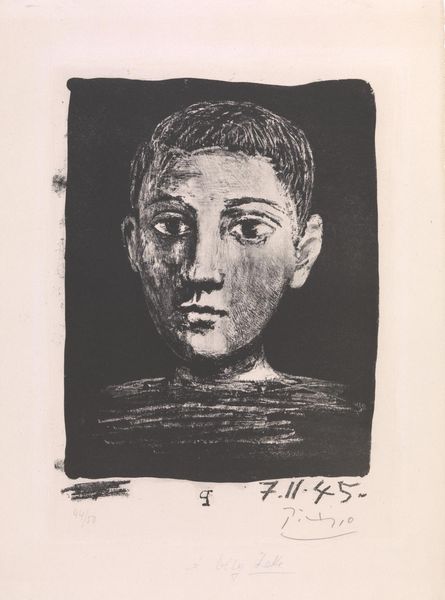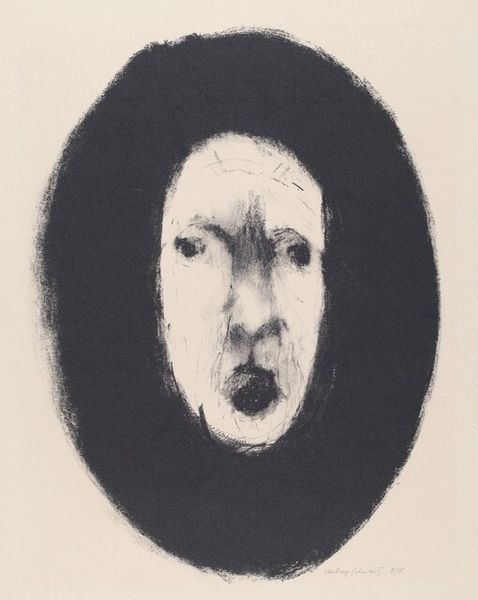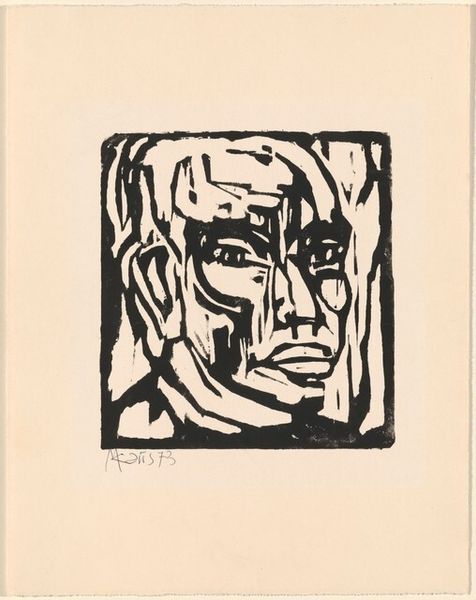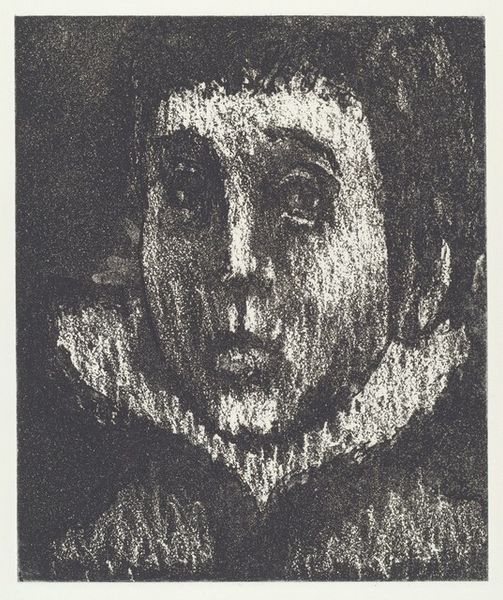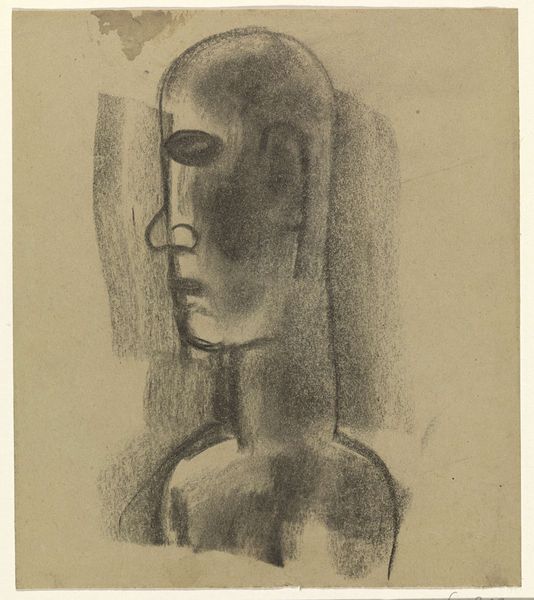
print, etching
#
portrait
#
cubism
# print
#
etching
#
line
#
monochrome
Dimensions: image: 34.93 × 27.15 cm (13 3/4 × 10 11/16 in.) sheet: 62.71 × 44.45 cm (24 11/16 × 17 1/2 in.)
Copyright: National Gallery of Art: CC0 1.0
Here we see Picasso's lithograph, "Head of a Boy II." The stark contrast evokes a powerful play of light and shadow, calling attention to the boy’s visage emerging from darkness. Light falls on the boy's right eye and cheek, illuminating his youth while shrouding half his face in obscurity. This dance between light and dark is an ancient motif—reminiscent of chiaroscuro—that appears across centuries, from Caravaggio’s dramatic paintings to Rembrandt’s introspective portraits. The dichotomy may represent knowledge versus ignorance, presence versus absence. It's a symbol that seems to reflect humanity’s eternal struggle between enlightenment and oblivion. The light is a beacon, but it blinds the boy; what it reveals, it conceals. The image's emotional tension stirs within us a primitive fear of what lurks in the shadows. Ultimately, Picasso’s work reminds us that these symbols do not evolve in a linear progression but are cyclical—reemerging in new contexts, reshaped by history, yet eternally resonant.
Comments
No comments
Be the first to comment and join the conversation on the ultimate creative platform.
